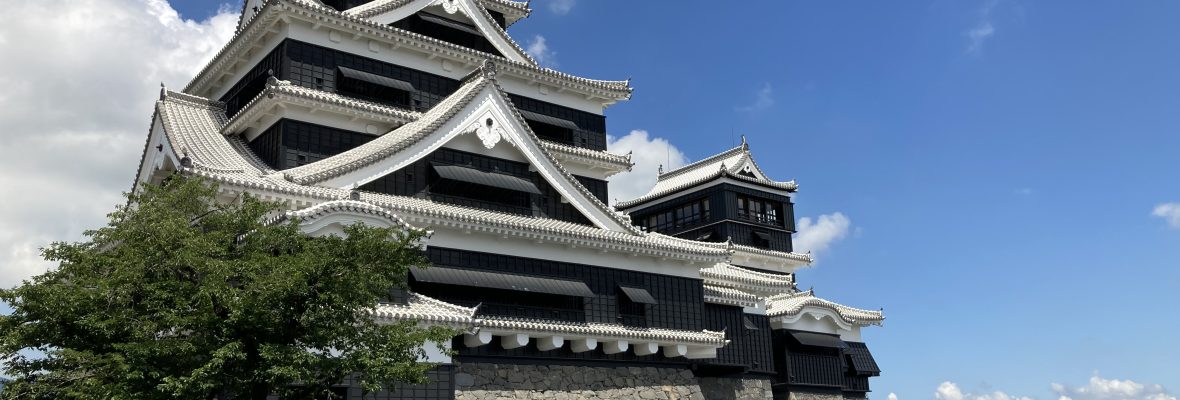Part 3.
Once Japanese mines became more efficient in extracting silver, production increased twofold. Local daimyo and merchants began trading with what seemed like an abundance of silver in their hands.
For example, in 1538, an envoy turned up in Joseon (Korea) with 225 kilograms of silver. The envoy claimed to be from the Shoni clan, but who was the Shoni? Let’s have a look.
Muto Sukeyori (1160-1228) moved from Musashi Province in eastern Japan to Kyushu in March 1195 as a vassal of Minamoto Yoritomo (1147-1199), who founded the Kamakura Shogunate. Sukeyori was appointed Dazai Shoni of Dazaifu (Dazaifu can still be found just a short distance from Fukuoka city in Kyushu) in October 1226. Dazaifu was the ancient regional capital in Kyushu which was also responsible for foreign diplomacy and trade in ancient Japan. The chief executive officer of Dazaifu was called Dazai Sochi. The position later became an honorary post for aristocrats from Nara and Kyoto. The subordinate but practical executive officer was called Dazai Daini, which only aristocratic noblemen could be appointed to. Sometimes, a local subordinate officer, Dazai Shoni, had the practical executive power of the regional government. Anyone from the bushi (samurai) class could be appointed to the Shoni position, so it was regarded as the highest rank a samurai one could normally acquire. After his appointment in 1226, Sukeyori ditched his birth name and simply called himself Shoni Sukeyori.
Anyway, if we match up the dates, it might have been Shoni Tokinao, the last Shoni lord, that sent the mission with 225 kilograms of silver in 1538. His father, Sukemoto (1491-1536), was defeated by Ouchi Yoshitaka in 1536. During the battle Sukemoto found himself cornered by enemy units and in traditional samurai fashion, killed himself, while waiting rescue from his main vassal, Ryuzoji Iekane (1454-1546) from Hizen (modern Saga Province). Although Tokinao was in exile at the time, some historians speculate that it could have actually been Shoni’s vassal, Ryuzoji who sent the mission, assuming the Shoni name and who might have had access to the silver deposits. The Ryuzoji of Hizen, were a long standing and powerful vassal of the Shoni Clan. The Shoni clan had been losing their land and power over many decades to the Otomo and Ouchi and had depended on their vassals to do most of the fighting, but it looks as though the Ryuzoji might have had enough of fighting a losing battle. We have evidence that Iekane and Ouchi Yoshitaka had been having secret talks and it is speculated that the Ryuzoji were planning to overthrow the Shoni and take power for themselves as Sukemoto was incapable of holding power for himself and it was only a matter of time till he was defeated. However, there is one other theory which is the most speculative and there isn’t a lot of evidence to support this, but here goes. Some Hakata merchants may have jumped at the opportunity during the Shoni, Ryuzoji and Ouchi confusion and used the Shoni name to initiate a new trade venture on their own, which would have been pretty daring considering the consequences if anyone ever found out.
To finish off this episode, as mentioned earlier, in April 1542, Anshin, a priest who claimed to be an ambassador of a daimyo, brought about 3 tons of silver to Joseon which even on today’s scale seems pretty incredible. Was this even possible? The Iwami Silver Mine alone produced 38 tons of silver per year at its peak, 3 tons of silver was possible, but an ambassador of a daimyo, he was not. As it turns out, he was pretending to be an ambassador who came from Tsushima, a famous old pirate haven. The Kamakura bakufu assigned samurai which had successfully kicked out the pirates and installed a samurai family as vassals who also acted as a trade middleman between Japan and the Asian mainland. So, who was this priest? Stay tuned for part 4.
Stu.
References.
三宅亨, 倭寇と王直, 日本と東アジアのコミュニケーションの総合的研究
戦国大名の海外交易 (名古屋学院大学総合研究所研究叢書 31) 2019 by 鹿毛敏夫 (The Overseas Trade of the Sengoku Daimyos (Nagoya Gakuin University Research Institute Research Series 31) )2019 by Toshio Kage.
Hazard. B, The Formative Years of The Wakō, 1223-63, Monumenta Nipponica , 1967, Vol. 22, No. 3/4 (1967), pp. 260-277, Sophia University
Oka Mihoko, Ed, 2022, War and Trade in Maritime East Asia, Palgrave MacMillan
Zuikei Shuho and Charlotte von Verschuer, Japan’s Foreign Relations 1200 to 1392 A.D.: A Translation from “Zenrin Kokuhōki”, Monumenta Nipponica , Winter, 2002, Vol. 57, No. 4 (Winter, 2002), pp. 413-445, Sofia University.


You must be logged in to post a comment.